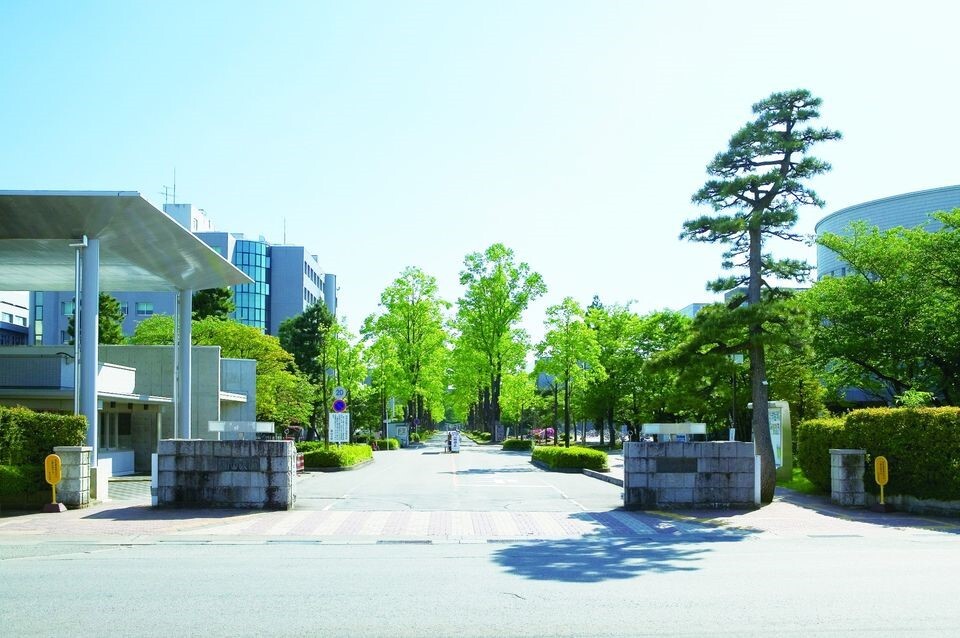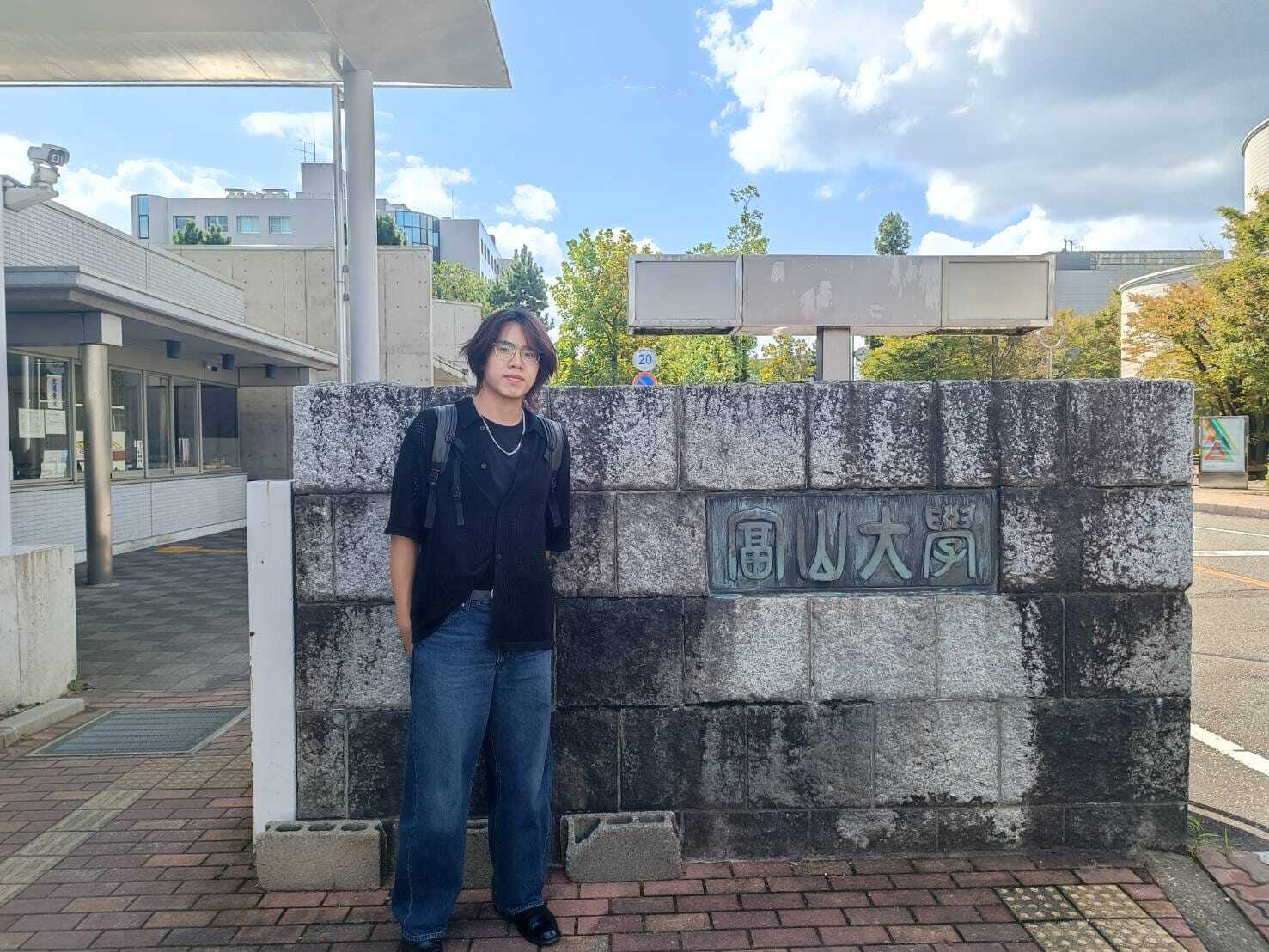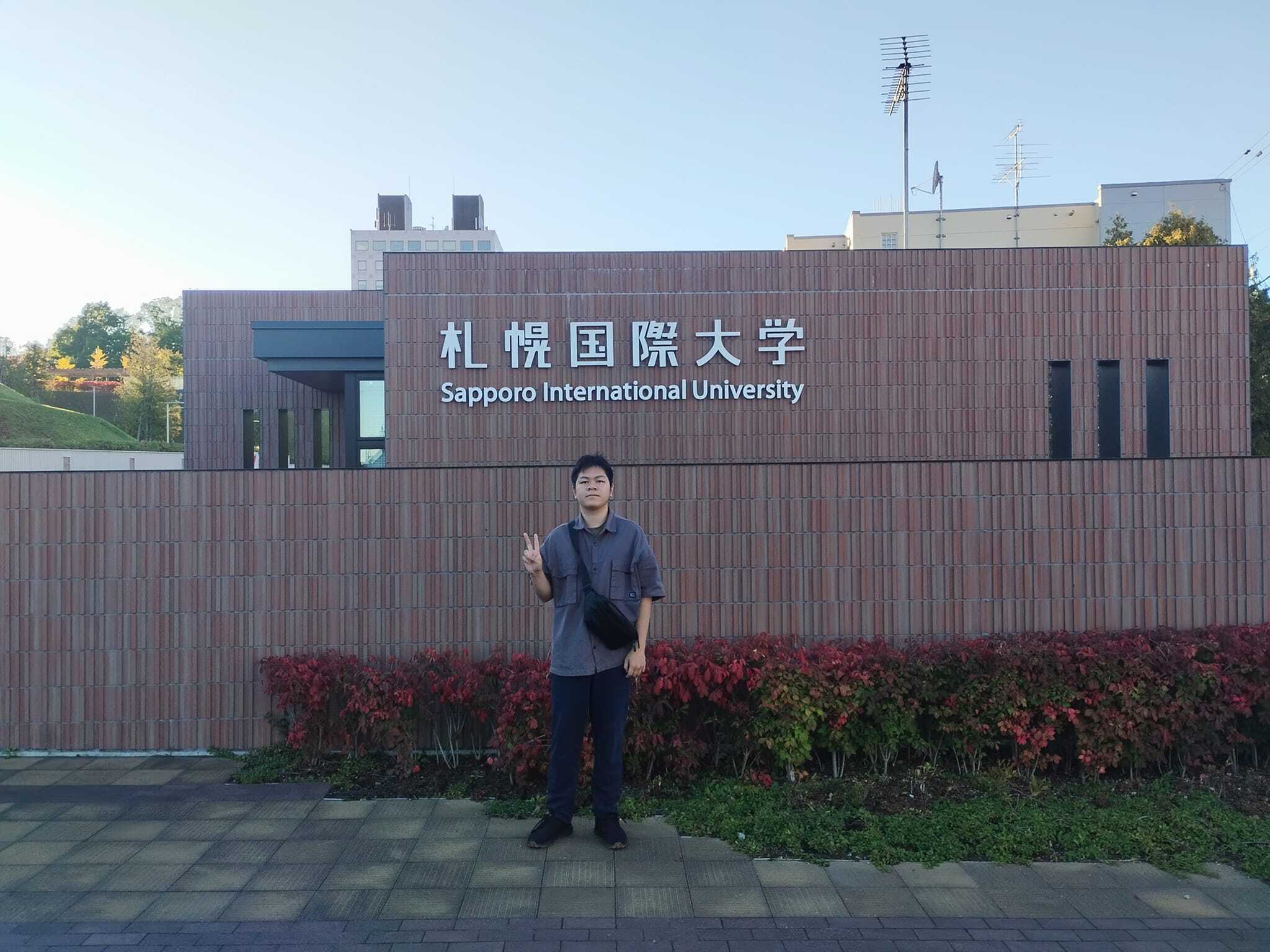國立日本富山大學-National University of Toyama, Japan
- Degree: Dual Degree
- Type: 2+2
- Link::https://www.u-toyama.ac.jp/
- 附件 Attachment

札幌國際大學-Sapporo International University, Japan
- Degree: Dual Degree
- Type: 2+2
- Link:https://www.siu.ac.jp/os_abroad/cht/
- 附件 Attachment

美國威斯康辛大學雷河分校University of Wisconsin–River Falls, Wisconsin, USA
- Degree: Dual Master's Degree in English Language Teaching
- Type: 1+2+2 Program
- Link:http://www.uwrf.edu/
- 附件 Attachment
美國威斯康辛大學雷河分校-University of Wisconsin–River Falls (UW–River Falls), USA
- Degree: Dual Degree
- Type: 2+2
- Link:https://www.uwrf.edu/
- 附件 Attachment
學生心得-Study Abroad Reflection / International Experience
Student Testimonial – 陳紀睿 Ji-Rui Chen (Department of Applied Japanese) / Dual Degree Program
(All images and content are published with the student’s consent.)
My first time going abroad was for the Dual Degree Program at the Department of Economics, University of Toyama, Japan, where I will be studying for two years.
The University of Toyama has a large campus consisting of three locations. The Faculty of Economics is situated in a campus that also houses a student cafeteria, library, bookstore, café, and four other faculties.
The area around the campus is quite convenient, with supermarkets, drugstores, restaurants, and convenience stores within walking distance.
The university dormitory is about 2.2 kilometers away from campus—roughly a 10- to 15-minute bike ride. Each student lives in a private room with an en suite bathroom. Since the dorm is located away from the busy city center, it’s very quiet at night. The room includes an IH stove, so I can cook my own meals. The monthly rent is about NT$3,000, with utilities charged separately.
As a dual degree student, I am registered as a regular student at the university, which means I attend classes together with local students from the start of the semester. The classes are not particularly difficult. Unlike in Taiwan, attendance is not taken in most classes and it does not factor into the final grade.
One class that stood out to me is called “Learning Seminar.” In this class, the instructor presents a topic, and students are expected to engage in discussion and share their own thoughts and opinions. This interactive style of learning is something I’ve never experienced in Taiwan, and I find it quite refreshing.
It has been about a month since I arrived in Japan, and I am gradually adapting to both academic life and everyday living.
Looking ahead, I hope to successfully complete my two years of study here and return to Taiwan with valuable knowledge and experience.

Student Testimonial – Wu student (Department of Applied Japanese) / Dual Degree Program
(All images and content are published with the student’s consent.)
The campus of Sapporo International University is relatively small, but there are many buildings including the student cafeteria, library, convenience store, and more. After entering the campus gate, you have to climb a long flight of stairs.
The student cafeteria offers some of the cheapest meals I’ve seen in Japan so far. Outside food typically costs around NT$200-300, but the most expensive meal at the cafeteria is only 500 yen.
My apartment is right next to the school, but the Kiyota ward where the university is located is somewhat remote, and shops are quite far away. It takes about 20 to 30 minutes on foot to reach supermarkets, electronics stores, and so on.
It’s not winter yet. I initially thought it would be very cold in Sapporo, but except for early mornings and evenings which are cool, the midday weather is quite warm.
Since arriving in Japan on September 27, it has been three weeks. Besides the Japanese language class for international students, most of the courses I chose are focused on obtaining the Japanese Language Teaching certification. I also enrolled in a Korean language class. However, many courses are not offered in the fall semester and will only be available in the spring semester.
One major difference from Taiwan is that each class in Japan lasts 90 minutes. Besides regular courses, students also need to select a research seminar (ゼミ) professor.
During the first week of classes, the instructors mainly explain grading and exam methods. For the seminar (ゼミ) course, they first took us to the library and taught us how to search for literature, papers, and news materials.
The most distinctive aspect of attending classes in Japan is that almost every class requires presentations, or the professor asks you to write reflections and feedback.
The Japanese class I was assigned teaches how to write papers and reports, with a strong emphasis on group discussions and presentation skills.
Since I transferred in as a third-year student, I need to complete all required courses from freshman to senior year before graduation.
So far, I have not encountered any problems living in Japan. I hope to study smoothly during these two years, have a fulfilling study abroad experience, and successfully obtain my dual degree.

